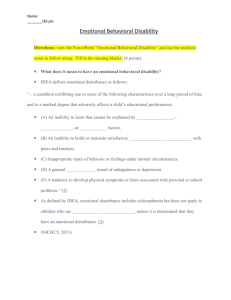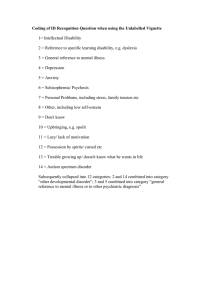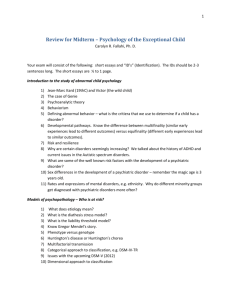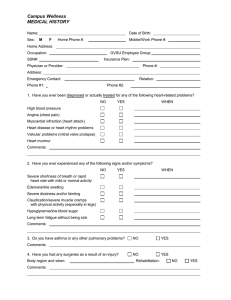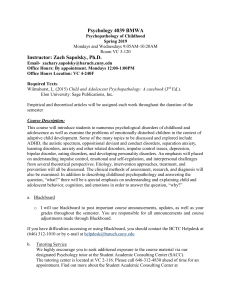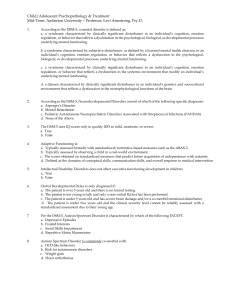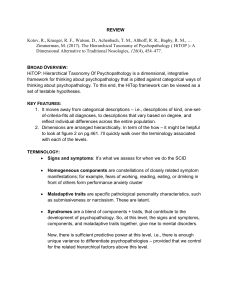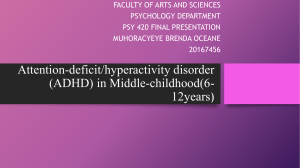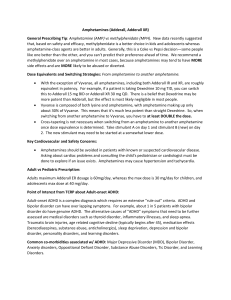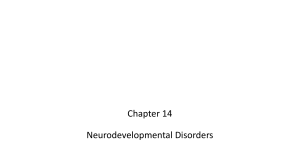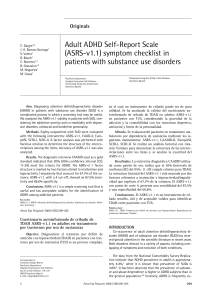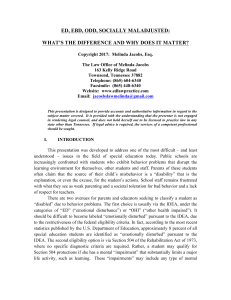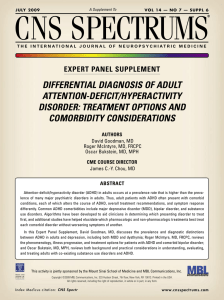Document 15612595
advertisement
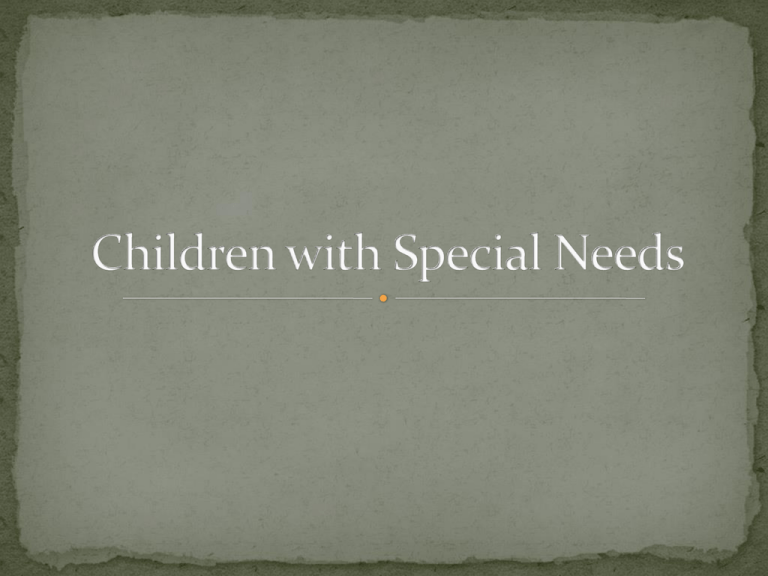
Psychopathology- illness or disorder of mind. Developmental Psychopathology- uses insights into typical development to understand developmental disorders. 4 general principles of dev. Psychopathology 1. 2. 3. 4. Abnormality is normal. Most children act oddly sometimes. Children with serious disorders, are in many ways like everyone else. Disabilities change year by year. Most disorders are comorbid (more than one problem in the same person). Which disability is most disabling and the severity of each disorder can change . Life may be better or worse in adulthood. Some disabilities can be compensated for (blindness, deafness, ADHD). Some may be more challenging as adults (bi-polar). Interactions with family, school, community, culture: makes people either modify or worsen their psychopathology. Elementary School Aged Kids: when much psychopathology shows Kids are grouped by age and expected to learn at the same rate. This is problematic for those who differ from their peers. • Two Main Principles: • 1. Multifinality- one cause can have many possible final outcomes. • Infant given hormones (one cause) may be: hyperactive, unusually calm, easily angered, quick to cry…(many possible outcomes). • 2. Equifinality- one symptom can have many possible causes. • 4 year old doesn’t speak (1 symptom) could be: autistic, hard of hearing, mentally retarded, electively mute (many possible causes). Grouped together because they are often comorbid and often confused for each other. Up to 10% of all children have ADHD. Difficulty paying attention Uncontrollable urges to be active or act out impulsively Disruptive when adults want them to be still Approximately twice as many boys as girls have ADHD. Tend to have difficulty with academics and lower graduation rates. Extreme mood swings. At least one episode of grandiosity (overblown exaggeration). Ex. Genius destined to save the world. Other times severely depressed. Unwilling to read, play with friends, or go to school. Medical visits from 1995-2003 have increased 40times. Could be misdiagnosis in past or over diagnosis now. Rageful or irritable on their best days Always angry at home and school and for months at a time. Ex. Scream over dropped ice cream, throw a toy across the room instead of sharing it. Behavior may be the beginning of adult bipolar disorder or later anxiety and depression. Problems with perception or processing information (remember the video). Everyone has a multiple intelligence they do not excel at (musical, bodily kinesthetic) But if you have a severe problem with verbal/linguistic or logical/mathematical, that makes all academic learning challenging. • Dyslexia- most commonly diagnosed learning disability. • Unusual difficulty with reading. No single test for it. • Dozens of types and causes of dyslexia • Dyscalculia- unusual difficulty with math/numbers Characterized by: emotional blindness 1. inadequate social skills 2. restricted, repetitive patterns of behavior, interests, or activities. Now 1 in every 110 children are diagnosed with autism spectrum disorder. Many are not intellectually disabled at all Children with autism find it difficult to understand other people emotions. Many do not want to talk, play, or interact with anyone. • Symptoms are many and vary in severity (spectrum). • Some never speak, rarely smile, and can play with one object for hours. • Others (high-functioning)- can speak and interact but may have difficulty with social cues or relating to others. • Can be extremely gifted in one area (drawing, math, memory, etc) • Diagnosis have increased dramatically • Could be an increase in the number of people with the disorder • Could be more accurate diagnosis • In order to be diagnosed on the spectrum a person’s symptoms must be severe enough to significantly impact their ability to function. LRE- Least Restrictive Environment Can mean: educating kids with special needs in the general education classroom (mainstreaming) most of the time instead of the spec education classroom. Sending child to resource room for extra help Full inclusion (in the regular ed all the time) Depends on what is best for that particular child. • IEP- Individual Educational Plan • Getting the child the help they need to be as successful as possible. • Special education teacher, general education teacher, administrator, parent, and child are all part of the team that comes up with the IEP and makes sure it is followed. • Give information about the child’s disability, sets goals for the child, lays out any accommodations the child may need • Extra time on assignments, pulled out for testing, written notes, etc…



